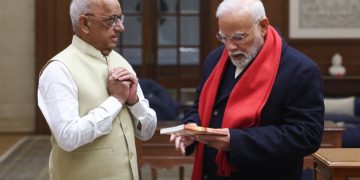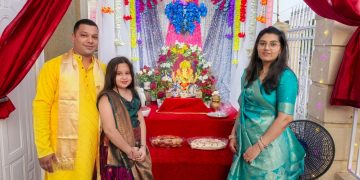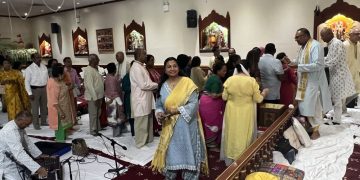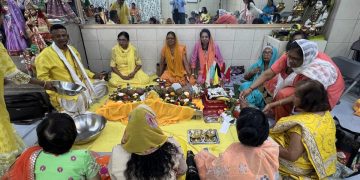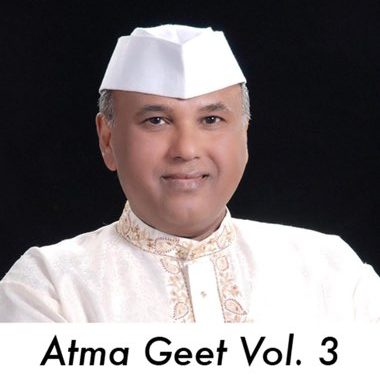Arya-Hindu people all over the world pause, some on May 21 and others May 21 celebrated the birthday of Mother Seetaa. This festival brings into focus an illustrious female character, Mother Seetaa, whom we must study and seek to emulate.
What is there in Seetaa’s persona that pulls us to her? Why is it that we feel motivated to turn the pages of her history to understand who she was?
The first character trait of Maataa Seetaa that comes to mind almost immediately is the impeccably ideal life that she lived. Her marriage to Shri Raam brought together two souls, two families and two cities. She ‘came over’ from her father’s kingdom in Mithilaa to live permanently in her husband’s family in Ayodhyaa, and there is no evidence in the Ramayana that shows her as having ever returned. When Raam and Seetaa had just arrived in the forest to live in exile, Janak and Sunainaa, her parents, came to see her. Seetaa went to the hut where her parents were staying to pay them respects. The Ramayana records her as saying nothing – no crying, no complaining, no showing of regret and hurt feelings. And very soon after she arrived in their hut, Sunainaa indicated to Janak that she shouldn’t be kept long – she had to return to Raam, for parents’ residence was no longer the residence of their married daughter. Also, when Kaikeyi had given the order for him to go into exile, Shri Raam asked Seetaa to stay on in Ayodhyaa for the 14 years to help look after his parents, reminding her that a dutiful daughter-in-law had great blessings coming her way. Seetaa acknowledged those potential blessings, but said to Shri Raam that a wife without her husband was like a body without soul, a river without water, and so, without Shri Raam’s presence, heaven for her would be no different from hell. Seetaa, instead of returning to her parents’ home, chose to follow her husband to live through immense hardship coming from bushes, thorns, hunger, fatigue, rain, heat, etc.
Many people heap abuse on Shri Raam for giving credence to rumors spread by illiterate people about Seetaa’s character and consequently sending her, in a pregnant state, into the forest for a second time. Even this part of the Epic saga contains long lasting inspirations for us in these modern times. It shows the deep sense of discipline, restraint and responsiveness of a virtuous King. In banishing Seetaa, King Raam showed that the concerns of his subjects far superseded those of his immediate family, no matter how ruinous the consequences were. A lesson in sacrifice, indeed, for modern political rulers practicing nepotism! Shri Raam’s virtue remained intact because he never married anyone else, but still saw her as his wife. We may remember that when he had performed a huge sacrifice in Seetaa’s absence, he had a golden statue of her meaningfully placed next to his side. Also, she also never succumbed to any vindictiveness, anger and temptation to get married to someone else. She remained loyal to him to the last breath. In fact, she bore him handsome, virtuous, and skillful twin-sons [Lav and Kush] who were a lesson to the world.
There isn’t much space here, but I end this tribute by quoting Maataa Anasuyyaa who, in counseling Seetaa about ideal wifehood, says: Ekai dharma eka vrat nemaa, Kaaya bachan man pati pad premaa – A married woman has one ethic, one vow and one rule to observe: she must remain loyal to a virtuous husband in thought, word and deed. Shri Raam deserved such conjugal loyalty because he remained conjugally loyal to her too. It is for these foregoing reasons that eighteen million years after they lived, we in these modern times still sing their glory on occasions of Raam Navami and Seetaa Jayanti!!
This world, especially Hindus, need living examples of Raam and Seetaa again, for that’s the only way each home, Hindu or otherwise, will become Ayodhyaa again. Happy Seetaa Jayanti. Namaste!! And, do pardon this unusually long post!
DR SATISH PRAKASH
GURUKULA – GUYANA AND NEW YORK




















